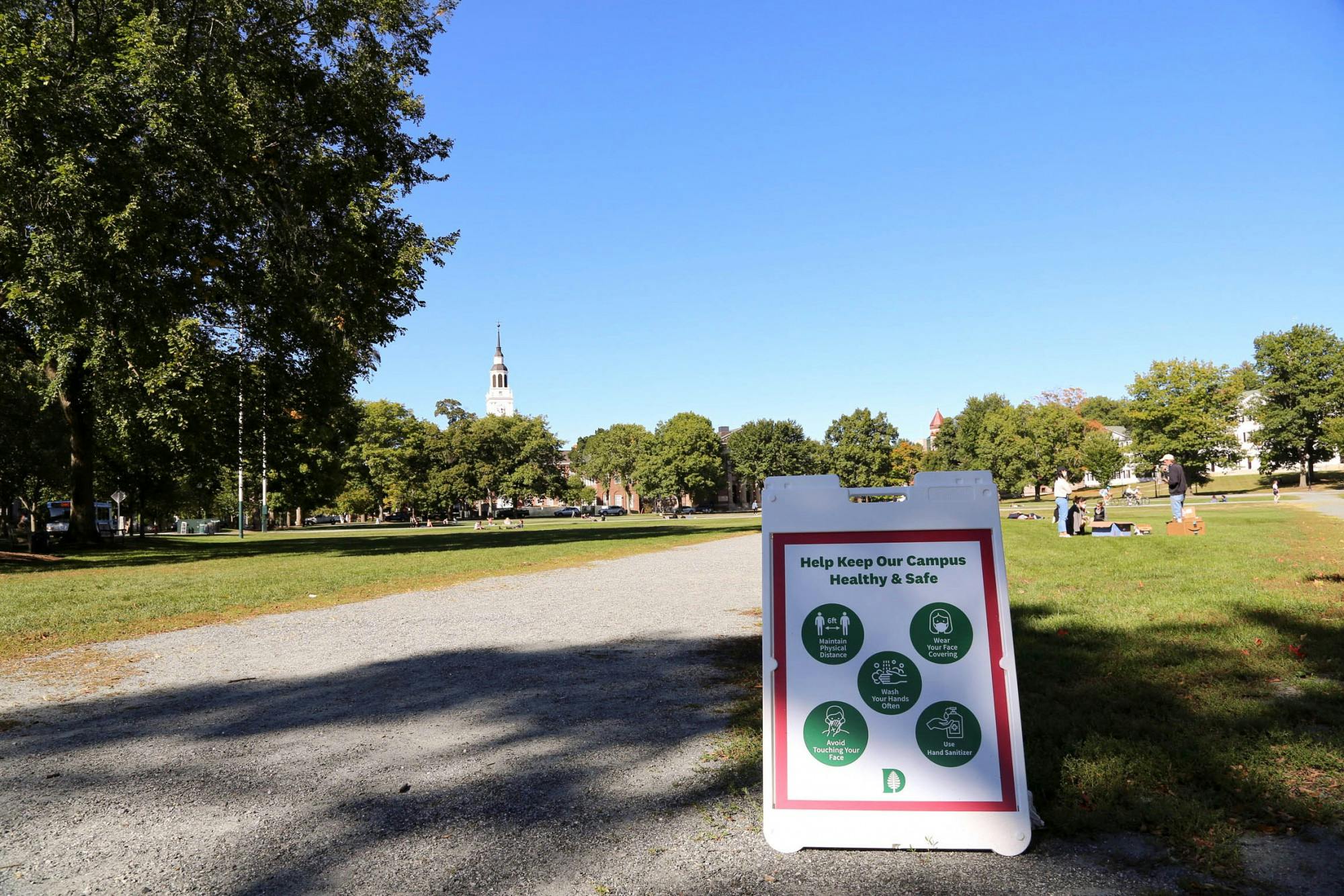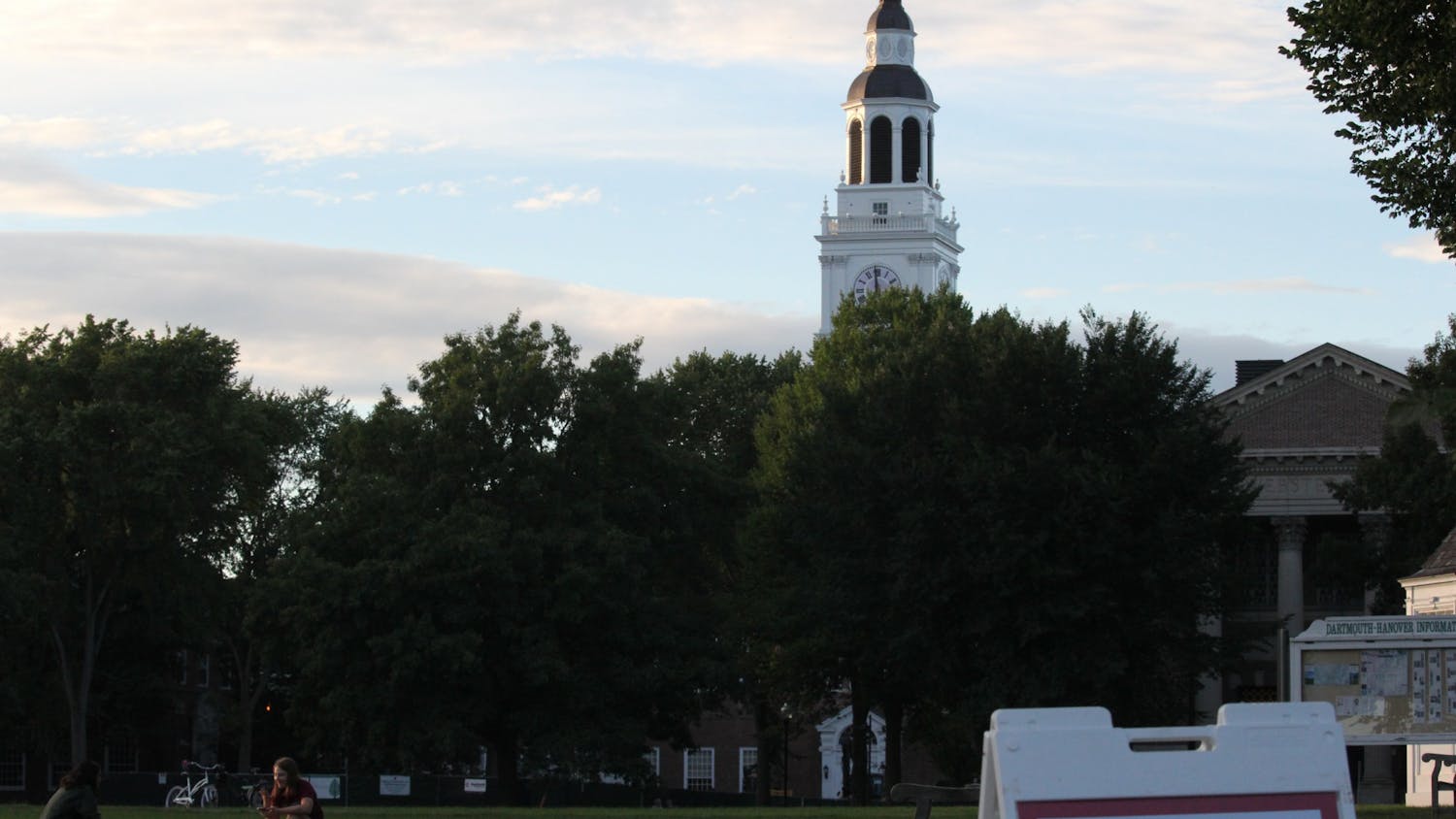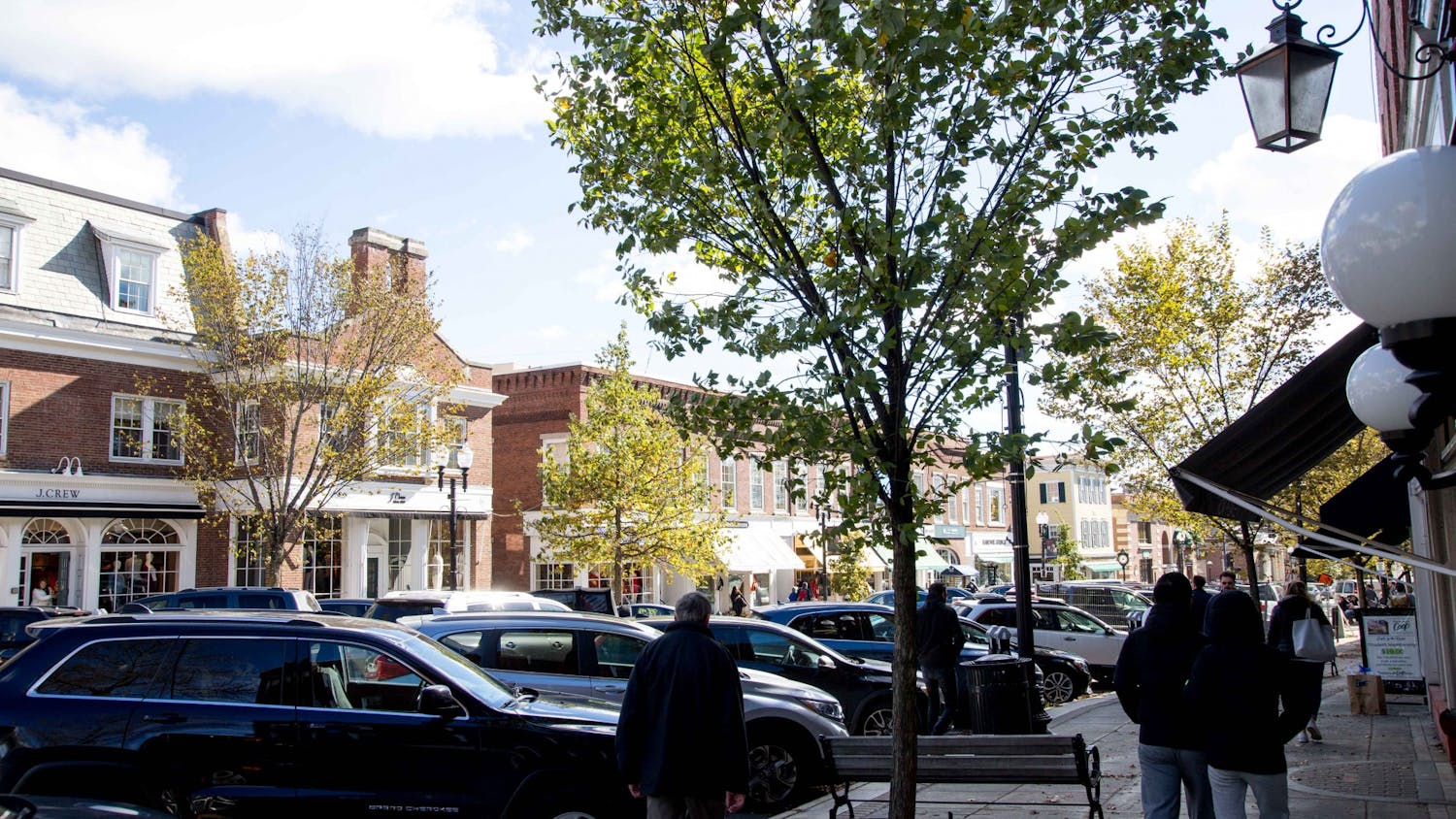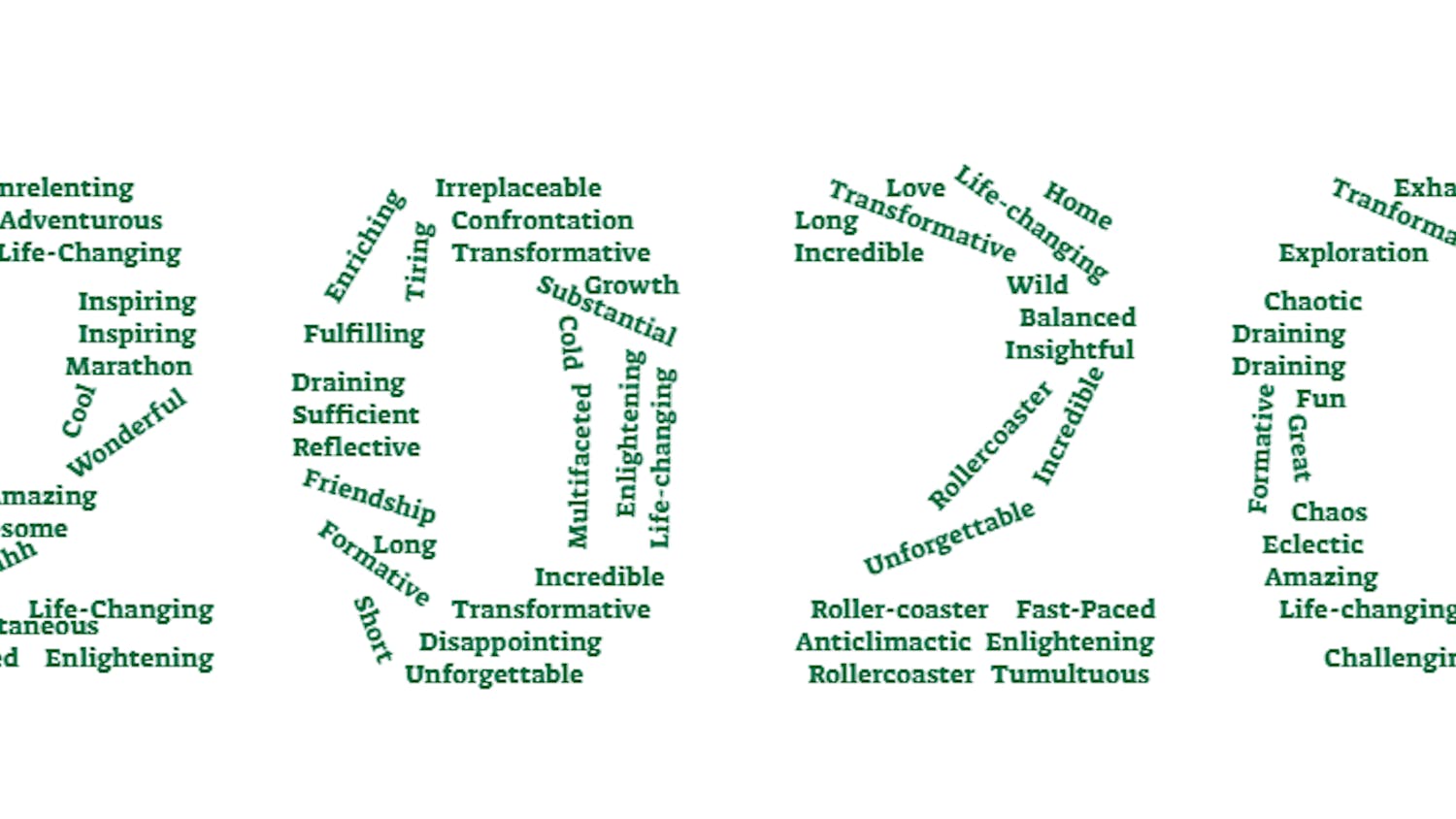In the six months since campus closed, I have craved a long walk around Hanover. So, when I returned this term, I headed out to enjoy the fall weather. Along the way, I discovered all the ways in which COVID-19 has altered the College’s physical spaces, transforming how freshmen will experience life at Dartmouth.
When I first walked onto the Green, an A-frame sidewalk sign greeted me, reminding me that things are not normal. This sign was comforting to me, though. Signs like this usually herald exciting events like presidential candidate visits, which signify an active campus. It was grounding to see one reflecting the current time of change at this central corner of campus.

Collis and Robo sit across the road from the sidewalk sign. These spaces often see a lot of foot traffic — especially in the beginning of fall. First-Year Trips, a centerpiece of most freshman fall experiences, starts on Robo lawn. Each year the grass recedes, trampled under Trips’ welcome festivities and dances.
I found the thick grass jarring compared to the usual trampled lawn. The paper trees that students have planted in rows further exaggerate the lawn’s uncanny greenness. Filled with the Class of 2024’s hopes and fears, the trees have redefined how Dartmouth uses this space to embrace freshmen into our community.

Another iconic moment marking the start of a typical freshman year is the class photo in front of Dartmouth Hall. There’s no way you can actually see everyone in these class photos — especially beyond the front row — but they hold sentimental value nonetheless.
After my freshman photo, I remember watching the crowd of ’21s slowly dissolve, like a sugar cube in water. This year, the ’24s are stamped in front of Dartmouth Hall more permanently, albeit symbolically. Just as the ’24s will have a unique experience of Dartmouth, they have a unique image of their class.

While I stood admiring Dartmouth Hall, the “Sun God” drove by. I actually have a picture with this Hanover icon in his robes and ornate golden mask. His car is as flashy as his gear, and you can always hear the Sun God before you see him — he is known for blaring music around campus. The origin of the Sun God is highly contested, and I’m glad to see that this quirk of campus remains unchanged.
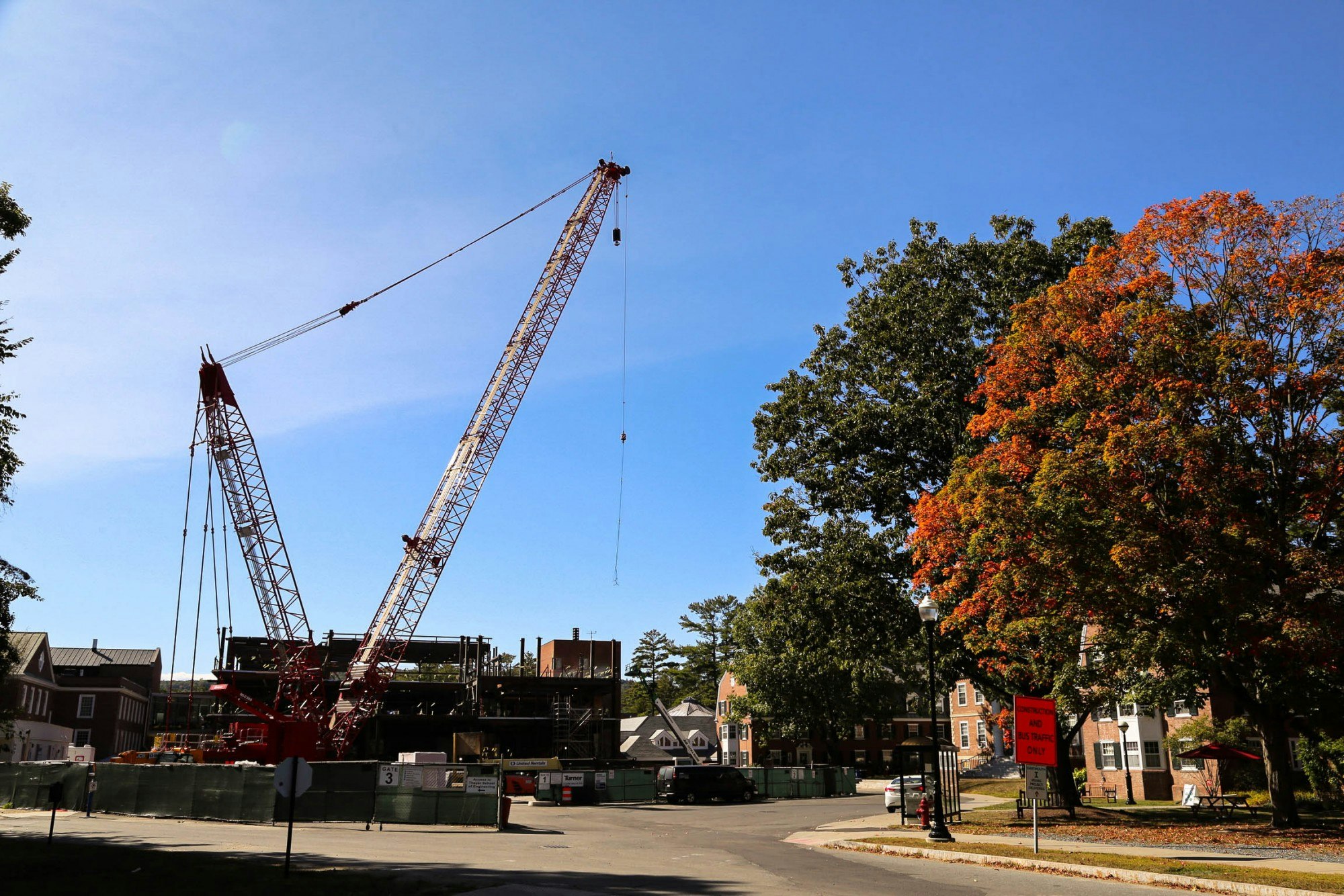
At the end of Gold Coast, which is already filled with white DDS tents, red cranes starkly divide the blue sky. While I don’t think these projects are related to accommodations for the pandemic, it seems fitting that so many spaces at Dartmouth are literally under construction.
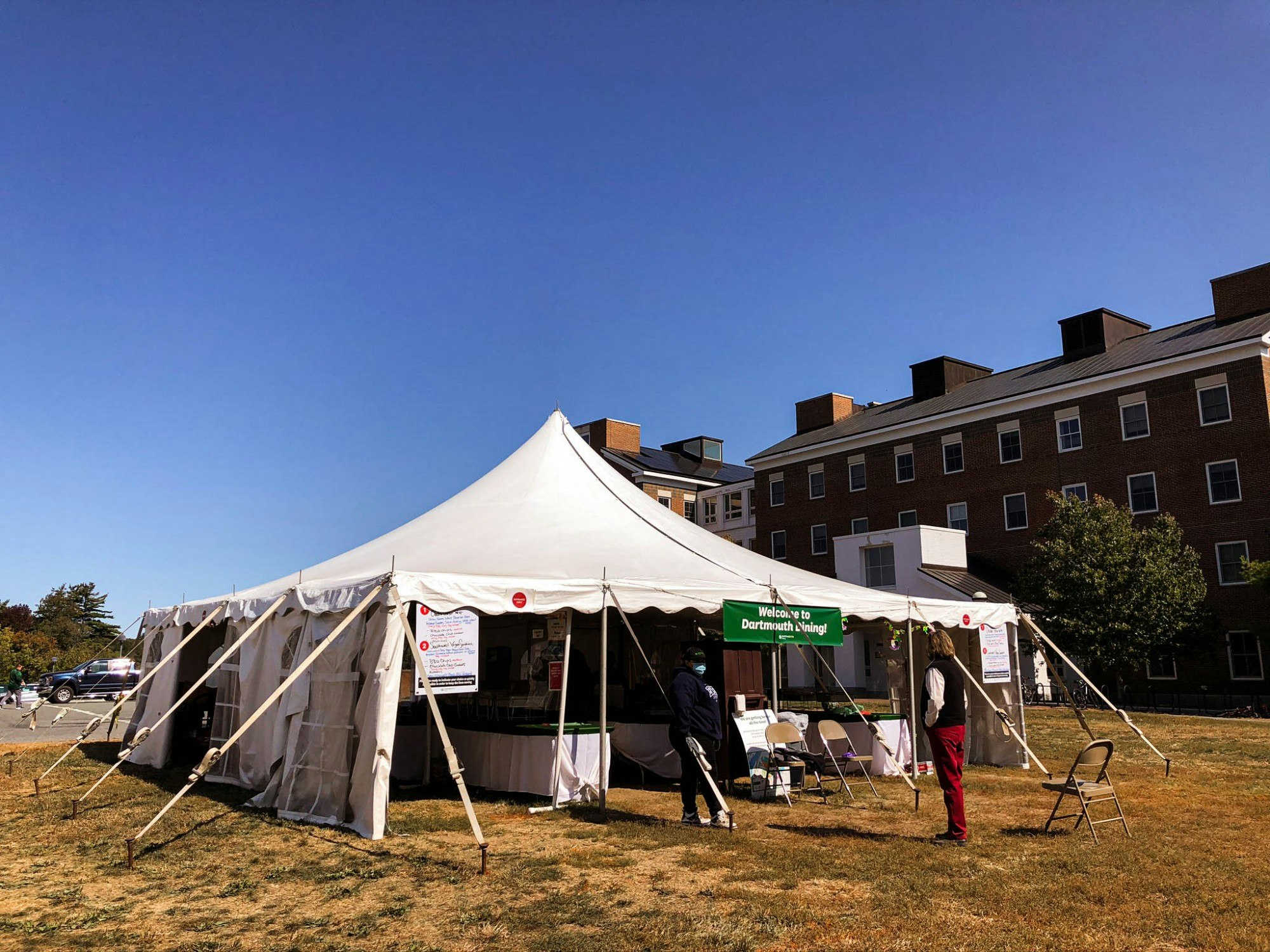
Another newcomer are the Dartmouth Dining tents that dot campus. Their whiteness adds a sterile element to Dartmouth, and their pointed tips remind me of digital renderings of the coronavirus.
The Dartmouth Dining tents are actually emblematic of a cultural shift on campus. Whereas grabbing food used to be an annoying necessity, now grabbing meals can feel like the focus of students’ days. For the first week on campus, students were permitted to go outside only to visit these food tents, making the tents a centerpiece of quarantine routines.
The tents have a somewhat festive air, with Dartmouth Dining workers doing everything in their power to frame them as happy places. When I walked by, I felt an intense desire to hang string lights.

During the first few weeks of classes, the true social hub of campus has become the COVID-19 testing tent. As the sole sanctioned space for on- and off-campus students to mingle, the College constructed this space generously. The snaked line under the tent acts as a kind of social conveyor belt where students, face to face but staggered six feet apart, can see and speak with one another in person.
Getting a COVID-19 test is no replacement for grabbing KAF with friends, but the energy in the tents reminds me of the social interactions I used to cherish at Dartmouth. Seeing reunions happen has been heartwarming, even though students remain separated by a type of polar magnetic opposition that prevents them from fully embracing.
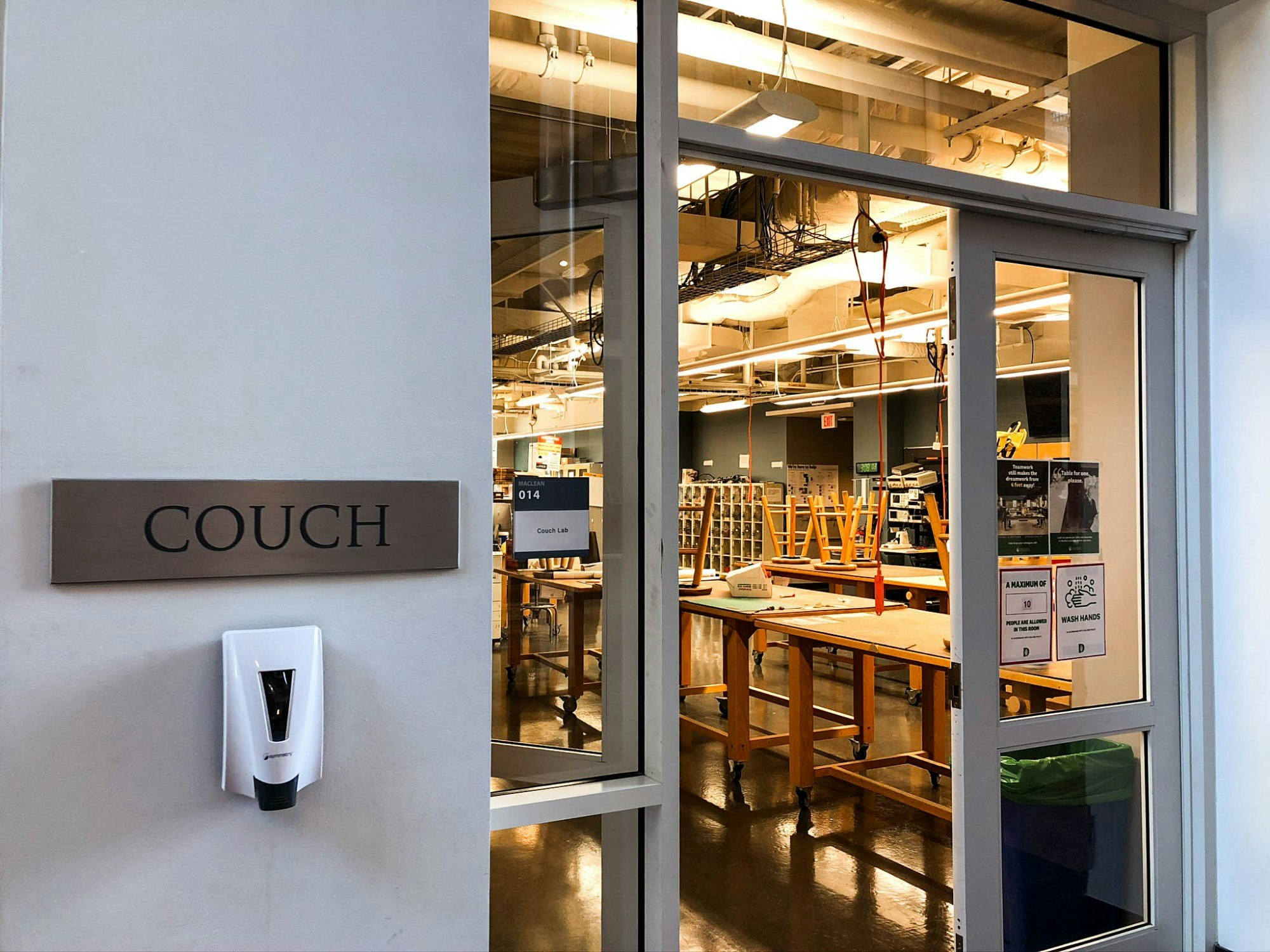
The COVID-19 testing tent isn’t the only space on campus equipped with new technology. Because the roads are closed due to construction around Thayer, I had to walk through the MacLean Engineering Sciences Center to get to the River dorms, which gave me the chance to see changes to Dartmouth’s indoor spaces.
Two bulletins posted outside Couch Laboratory outline the social distancing guidelines for this space, which now has a maximum occupancy of only 10 people. A hand sanitizer dispenser hangs on one side of the door, and a no-contact temperature station waits on the other.
Like the other changes to campus, these adaptations gave me pause but also excited me. It felt like I was glimpsing what a full return could look like for students and faculty at the College. However, the eerily empty lab added to my growing feeling of discomfort as my tour of campus drew to a close.
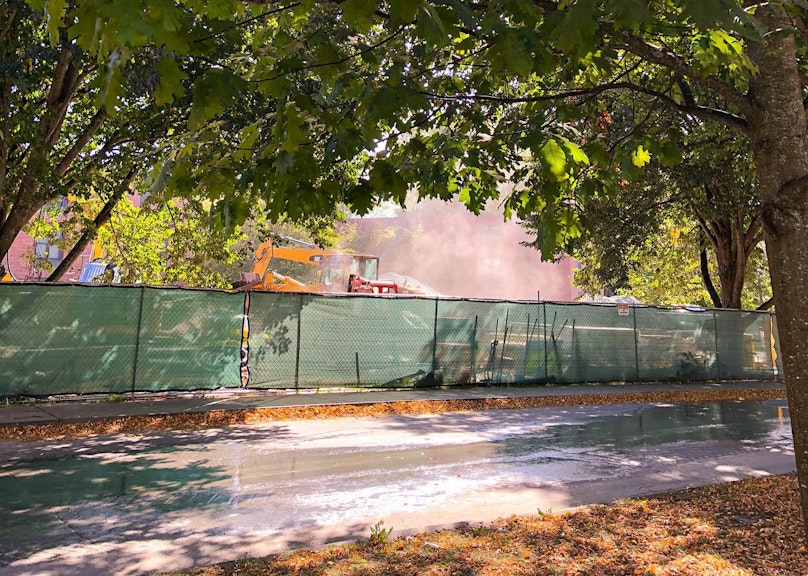
Notoriously isolated from campus — an original “bubble” — the River has long been considered one of the least desirable dorm assignments for freshmen. The 15-minute walk to class in near-blizzard conditions is enough to acclimate anyone to New Hampshire. However, the River is now even more formidable: It houses the COVID-19 quarantined. While I pictured a perfectly quiet River when I imagined college quarantine, most of the River’s usual features are shrouded in construction. Quarantining here would be a very loud experience.

While walking around campus, I missed the Dartmouth that I used to know. The landscape of Dartmouth has transformed to accommodate the pandemic, swapping comfortingly busy spaces for sterile tents and empty buildings. In the process, Dartmouth students have had to learn new ways of living and interacting with each other.
Even amid these changes, however, the Green remains a stronghold of continuity and community. Here, students, faculty and Hanover residents can see one another while maintaining social distancing guidelines, leaving the charm of campus somewhat intact. From the vantage of the Green, the tents in front of Murphy’s almost look like preemptive Homecoming decorations, rather than adaptations to a pandemic. It’s easy to imagine how Dartmouth students can retain a sense of normalcy on the Green, safety guidelines (and weather) permitting.


